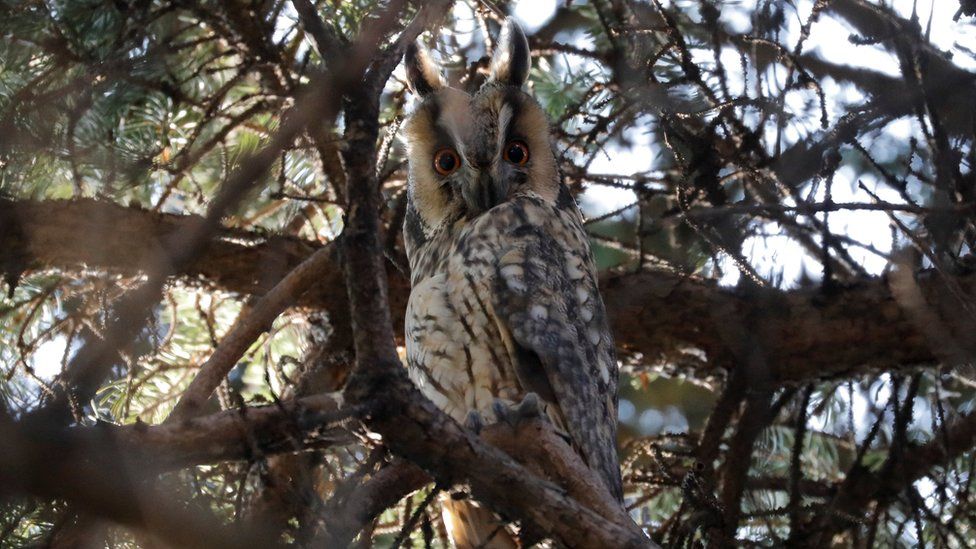ARTICLE AD BOX
 Image source, Reuters
Image source, Reuters
Thousands of birdwatchers in Serbia and from abroad regularly travel to Kikinda to see the long-eared owls in the town's parks
By Guy De Launey
BBC News, Belgrade
Bird watchers call Kikinda, in northeast Serbia, the "world capital of long-eared owls".
As many as 700 of these striking birds of prey - which get their name from their distinctive ear tufts - spend the winter months roosting in the trees around the main square of this small Serbian town close to the border with Romania.
But local ornithologists are warning that the much-cherished owl population may be under threat, after they discovered more than 800 dead birds in nearby fields in recent days. Experts believe they could have been poisoned.
None of the dead birds were long-eared owls. They are mostly rooks and jackdaws, which are locally-protected species. But they are crucial to the local ecosystem and to the long-eared owls, which are also protected.
"The rooks build nests," says Marko Sciban, who works for the LIFE Danube Free Sky Project. "When they leave them in May, they are used by owls, red-footed falcons and kestrels."
The birds of prey do not build their own nests, so if there is nowhere for them to roost, they may move away from Kikinda.
And that would potentially be devastating for nearby famers who - consciously or otherwise - rely on them for pest control.
According to some estimates, the owls scoff as many as half a million voles and mice over the five months of winter. That service is particularly crucial in the current season.
"Last year and this year, farmers in northern Serbia have been suffering from an invasion of millions of rodents," says Milan Ruzic, the executive director of the Bird Protection and Study Society of Serbia.
"There are simply not enough animals to prey on the rodents. If we have less wildlife, we have more trouble with the rodents."
Mr Ruzic and his organisation have been trying to encourage farmers and local authorities to cultivate the trees and hedgerows, as they provide a habitat for the species which prey on rodents.
However, instead of following that advice, he believes that frustration with crop damage has led someone to spread poisoned seeds as a form of pest control.
Now, it seems the poison wasn't consumed by rodents - but by rooks and crows.
Image source, Society for the Protection and Study of Birds of S
Image caption,"We could see the birds dying right in front of our eyes," said Mr Ruzic, the executive director of the Bird Protection and Study Society of Serbia
"We could actually see the birds dying right in front of our eyes," says Mr Ruzic.
"They were up in the trees, behaving really strangely, and then just falling down. The damage is huge," he adds.
After the ornithologists raised the alert, the authorities were quickly on site. Veterinary officials took away the dead birds and are analysing them to assess whether this is indeed a case of poisoning and, if so, what kind.
Milan Ruzic - a qualified vet himself - is, however, already convinced that this is the latest in what he calls a "long-running series of illegal poisonings".
He is concerned about the impact it will have on Kikinda, which enjoys an annual influx of tourists keen to feast their eyes on the world's largest roost of long-eared owls.
"The whole city in winter and autumn relies on this spectacle. It brings a huge amount of money to the town, in terms of visitors, people staying over, visiting restaurants, buying souvenirs. It brings profit to the local community."
"We're trying to communicate to people that it's not only about this one case, we need to make sure this never happens again. Not only to the crows, but to any other species," Mr Ruzic says. "Because it does affect your lives."

 10 months ago
15
10 months ago
15








 English (US) ·
English (US) ·